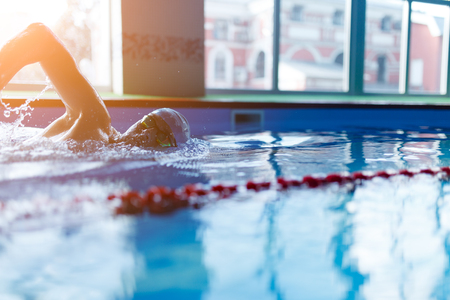Introduction to Hydrotherapy in the UK
Hydrotherapy, also known as aquatic therapy or water-based physiotherapy, has become an increasingly valued component of healthcare across the United Kingdom. Utilising the unique properties of water, hydrotherapy offers a gentle yet effective approach to rehabilitation, pain management, and wellbeing. Its adaptable nature makes it suitable for individuals of all ages and abilities, from those recovering after surgery or injury to people managing long-term health conditions. Today, hydrotherapy is widely available within both NHS facilities and private practices throughout the UK, reflecting its integration into mainstream British healthcare. As awareness grows regarding the benefits of holistic and patient-centred care, hydrotherapy stands out for its ability to combine physical therapy with psychological comfort. This comprehensive guide will explore the diverse techniques employed across the country, highlighting how British healthcare professionals harness the power of water to support recovery, mobility, and overall quality of life.
2. Common Hydrotherapy Techniques Used in the UK
Hydrotherapy is widely embraced across the UK as a cornerstone of both rehabilitation and wellness programmes. British clinical practice integrates a range of hydrotherapy techniques, tailored to suit diverse patient needs. Below, we provide a detailed overview of some of the most popular methods you’ll find in hospitals, private clinics, and community settings throughout the country.
Aquatic Physiotherapy
Known in some circles as “hydrotherapy” or “water-based physiotherapy,” aquatic physiotherapy is perhaps the most prevalent technique used in the UK. Under the guidance of Chartered Physiotherapists, patients perform targeted exercises in a heated pool. The water’s buoyancy reduces joint stress and supports movement, making it especially suitable for those with arthritis, post-operative conditions, or mobility issues. Sessions are often individualised and may be conducted one-to-one or in small groups.
Contrast Baths
Contrast bath therapy involves alternating between warm and cold water immersion, typically used for managing swelling, pain, and inflammation. This method is especially popular among athletes and individuals recovering from musculoskeletal injuries. The temperature changes encourage blood flow and can aid in reducing oedema.
| Technique | Typical Use | Session Duration | Common Settings |
|---|---|---|---|
| Aquatic Physiotherapy | Rehabilitation after injury or surgery; chronic pain management | 30–45 minutes | NHS hospitals, private clinics |
| Contrast Baths | Reducing swelling and inflammation; sports recovery | 15–30 minutes | Sports medicine clinics, physiotherapy departments |
| Whirlpool Therapy | Pain relief; wound care; muscle relaxation | 20–30 minutes | Hospitals, care homes, specialist rehab centres |
| Watsu | Stress relief; promoting flexibility and relaxation | 40–60 minutes | Spa facilities, specialist hydrotherapy pools |
Whirlpool Therapy
This technique utilises a specially designed pool or bath equipped with jets that circulate warm water around the body or specific limbs. In the UK, whirlpool therapy is frequently recommended for pain management, improving circulation, and assisting wound healing under controlled clinical supervision. It is commonly used for patients with chronic pain syndromes, post-surgical wounds, or circulatory problems.
Watsu (Water Shiatsu)
An increasingly popular approach in the UK’s more holistic therapy centres, Watsu blends gentle stretching and massage with warm water support. Practitioners guide patients through slow movements in a heated pool to relieve tension and promote deep relaxation. While not as commonly available as other forms of hydrotherapy within NHS settings, it is gaining recognition for its benefits in stress reduction and mental wellbeing.
Emphasis on Safety and Professional Guidance in British Practice
The effectiveness of these hydrotherapy techniques relies heavily on professional assessment and supervision. British practitioners ensure each session is tailored to individual health needs while upholding stringent safety standards—particularly important for vulnerable populations such as older adults or those with complex medical conditions.
Summary Table: Hydrotherapy Techniques at a Glance
The table above summarises key aspects of each hydrotherapy method commonly employed across the UK. When considering hydrotherapy as part of your treatment plan, always consult with qualified professionals to determine which technique best matches your clinical requirements and personal preferences.

3. Benefits of Hydrotherapy for Different Conditions
Hydrotherapy offers a wide spectrum of benefits, making it a cornerstone of rehabilitation and holistic care in the UK. The therapeutic use of water supports patients across various health journeys, from acute injuries to long-term conditions. Below, we explore how hydrotherapy can be tailored to meet individual needs and improve patient-centred outcomes.
Rehabilitation and Recovery
For many patients recovering from surgery, injury, or neurological conditions, hydrotherapy provides a supportive environment to regain mobility and strength. The buoyancy of water reduces strain on joints and muscles, enabling gentle exercise with less pain and risk of re-injury. This is particularly beneficial for those with orthopaedic issues or after joint replacements, as it allows early mobilisation under professional supervision.
Pain Management
Chronic pain, whether from arthritis, fibromyalgia, or musculoskeletal disorders, can significantly impact daily life. Hydrotherapy’s warm water helps soothe aches and stiffness while encouraging relaxation. The resistance provided by water also enables safe strengthening exercises that improve function without aggravating pain. Many UK clinics report improved quality of life for patients who incorporate hydrotherapy into their pain management plans.
Mental Wellbeing
The calming effect of water extends beyond physical health. Participating in hydrotherapy sessions has been shown to reduce anxiety and stress levels, supporting mental wellbeing. The social aspect of group sessions and the opportunity for guided mindfulness in water are valued by both patients and practitioners across the UK’s NHS and private practices.
Managing Chronic Illness
Individuals living with long-term conditions such as multiple sclerosis or Parkinson’s disease often face challenges in maintaining activity. Hydrotherapy adapts to different ability levels, offering a safe space for movement where fatigue and balance issues are less pronounced. Regular sessions can help maintain cardiovascular fitness, improve flexibility, and boost overall morale.
Focus on Patient-Centred Outcomes
UK hydrotherapy services prioritise individualised care plans based on patient goals—whether it’s returning to work, increasing independence at home, or simply enjoying greater comfort day-to-day. By working closely with physiotherapists and other healthcare professionals, each session is tailored to maximise benefit and ensure progress is meaningful for every patient.
4. Protocols and Safety Measures in British Hydrotherapy Centres
Ensuring the highest standards of safety and professionalism is a cornerstone of hydrotherapy practice throughout the UK. British hydrotherapy centres adhere to strict protocols, prioritising patient well-being while delivering effective therapeutic outcomes. This section outlines essential safety guidelines, professional standards, and preparatory steps for patients engaging in hydrotherapy sessions.
UK-Specific Safety Guidelines
All hydrotherapy centres in the UK operate under rigorous health and safety regulations, often guided by the Chartered Society of Physiotherapy (CSP), Care Quality Commission (CQC), and Health and Safety Executive (HSE). These bodies set clear expectations for water quality, emergency procedures, infection control, and patient supervision.
| Safety Measure | Description | UK Standard/Regulation |
|---|---|---|
| Water Temperature Control | Pool water is maintained between 32°C–35°C to ensure comfort and minimise risk. | CSP Best Practice Guidelines |
| Infection Prevention | Strict cleaning schedules; regular monitoring for Legionella and other pathogens. | CQC & HSE Standards |
| Qualified Supervision | Registered physiotherapists must be present during all sessions. | CSP Registration Requirement |
| Emergency Protocols | Lifeguard or trained staff on site; resuscitation equipment readily available. | CQC Health & Safety Policy |
| Accessibility Provisions | Facilities adapted for individuals with mobility challenges; hoists and ramps provided. | Equality Act 2010 Compliance |
Professional Standards in Hydrotherapy Practice
The delivery of hydrotherapy is restricted to qualified healthcare professionals, primarily physiotherapists registered with the Health and Care Professions Council (HCPC). All practitioners must maintain up-to-date training in aquatic therapy techniques and emergency response. Continuous professional development is encouraged to uphold best practices and adapt to advances in the field.
Key Professional Responsibilities:
- Comprehensive assessment before starting hydrotherapy
- Individualised treatment planning based on patient needs and goals
- Ongoing monitoring during sessions for any adverse reactions or complications
- Detailed documentation of progress and session outcomes
- Clear communication with both patients and multidisciplinary teams involved in care
Patient Preparation for Hydrotherapy Sessions
A thorough patient preparation process is essential to maximise therapeutic benefit while minimising risks. The following preparatory steps are standard across UK hydrotherapy centres:
| Preparation Step | Description/Details |
|---|---|
| Medical Screening | Pretreatment assessment to identify contraindications such as open wounds, infections, or uncontrolled epilepsy. |
| Sensitisation Session | An introductory session to familiarise patients with the pool environment and procedures. |
| Appropriate Swimwear & Hygiene | Use of suitable swimwear; showering before entry to maintain pool hygiene standards. |
| Mental Preparedness & Consent | Clear explanation of procedures; obtaining informed consent from each participant. |
Conclusion: Patient-Centred Safety at the Forefront
The combination of comprehensive protocols, adherence to national standards, and a focus on individual patient preparation ensures that hydrotherapy remains a safe, effective, and patient-centred intervention throughout the UK. By maintaining these high standards, British hydrotherapy centres continue to deliver exemplary care while fostering trust within local communities.
5. Accessing Hydrotherapy Services Across the UK
Hydrotherapy is widely recognised throughout the UK as an effective therapeutic intervention for a range of conditions, from musculoskeletal disorders to neurological rehabilitation. If you are considering hydrotherapy, understanding how to access these services is crucial. Below, we outline the main pathways and important considerations for patients seeking hydrotherapy in Britain.
NHS Referral Pathways
For many individuals, the first step towards hydrotherapy is through the National Health Service (NHS). Typically, you will need a referral from your GP, consultant, or a physiotherapist. Once referred, you may be placed on a waiting list depending on local NHS resources and your clinical needs. Priority is often given to those with acute or severe conditions, post-operative rehabilitation requirements, or specific paediatric needs. It is advisable to discuss your symptoms and goals clearly with your healthcare provider to ensure that hydrotherapy is considered as part of your treatment plan.
Private Treatment Options
If you prefer not to wait or require more flexible scheduling, private hydrotherapy clinics are available across the UK. Many private physiotherapists offer hydrotherapy sessions in specialised pools, and some fitness centres have qualified staff for water-based therapy. When choosing a private provider, ensure that the therapists are HCPC-registered physiotherapists with experience in aquatic therapy. Costs can vary significantly depending on location and duration of sessions, so it’s wise to enquire about pricing packages and initial assessments beforehand.
Considerations When Seeking Hydrotherapy Services
Location and Accessibility
Hydrotherapy pools are not available in every community, particularly in rural areas. Consider travel distances and transportation options when arranging appointments.
Eligibility and Suitability
Not all conditions are appropriate for hydrotherapy. Your referring clinician will assess any medical contraindications such as open wounds, infections, or certain heart conditions before recommending aquatic therapy.
Insurance and Funding
If you have private health insurance, check whether hydrotherapy is covered under your policy. Some employers or charities may also provide support for specific patient groups.
Final Advice
Whether accessing hydrotherapy via the NHS or privately, always ensure that your chosen provider adheres to national safety standards and employs appropriately trained staff. Open communication with your healthcare team will help tailor your treatment for maximum benefit.
6. Real Patient Experiences and Case Studies
One of the most reassuring ways for new patients and carers to understand the benefits of hydrotherapy is by learning from real-life stories shared by individuals across the UK. These case studies not only highlight the diverse applications of hydrotherapy but also offer a relatable perspective on what to expect during therapy sessions.
Restoring Mobility After Surgery: John’s Story
John, a 58-year-old from Manchester, underwent knee replacement surgery and struggled with stiffness and pain during traditional physiotherapy. His physiotherapist recommended hydrotherapy at a local NHS centre. The buoyancy of the water allowed John to perform exercises he found impossible on land, gradually improving his range of motion and confidence. After several weeks, John reported significant pain relief and returned to walking unaided much sooner than anticipated.
Supporting Children with Cerebral Palsy: Emily’s Journey
Emily, aged 7 from Bristol, has cerebral palsy and attends regular paediatric hydrotherapy sessions. Her mother notes that the playful atmosphere in the warm pool motivates Emily to participate actively in her exercises. Over time, Emily’s core strength and balance have improved, making everyday tasks easier. For her family, hydrotherapy is not just a treatment but also a source of joy and social connection.
Managing Chronic Pain: Sarah’s Experience
Sarah, a 45-year-old living with fibromyalgia in London, found land-based exercise too painful. She joined a hydrotherapy group class where she felt supported by both staff and fellow participants. The gentle resistance of the water helped her build muscle strength without aggravating her symptoms. Sarah credits hydrotherapy for giving her back a sense of control over her health.
Insights for New Patients and Carers
These stories demonstrate that hydrotherapy can be tailored for people of all ages and backgrounds across the UK. Whether you’re recovering from surgery, supporting a child with additional needs, or managing a chronic condition, connecting with others who have walked a similar path can provide comfort and practical advice. Many facilities encourage peer support and welcome questions from new patients and carers—never hesitate to reach out to your local centre for more information or reassurance as you begin your own hydrotherapy journey.

